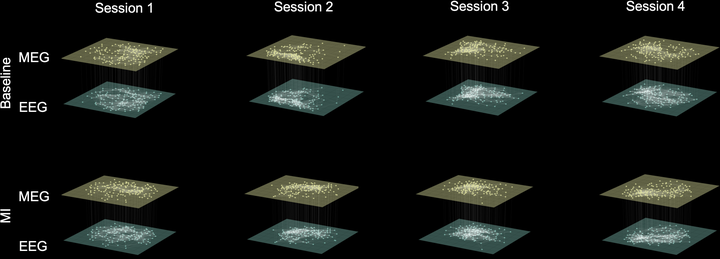
Abstract
Brain-computer interfaces (BCIs) constitute a promising tool for communication and control. However, mastering non-invasive closed-loop systems remains a learned skill that is difficult to develop for a non-negligible proportion of users. The involved learning process induces neural changes associated with a brain network reorganization that remains poorly understood. To address this inter-subject variability, we adopted a multilayer approach to integrate brain network properties from electroencephalographic (EEG) and magnetoencephalographic (MEG) data resulting from a four-session BCI training program followed by a group of healthy subjects. Our method gives access to the contribution of each layer to multilayer network that tends to be equal with time. We show that regardless the chosen modality, a progressive increase in the integration of somatosensory areas in the α band was paralleled by a decrease of the integration of visual processing and working memory areas in the β band. Notably, only brain network properties in multilayer network correlated with future BCI scores in the α2 band: positively in somatosensory and decision-making related areas and negatively in associative areas. Our findings cast new light on neural processes underlying BCI training. Integrating multimodal brain network properties provides new information that correlates with behavioral performance and could be considered as a potential marker of BCI learning.